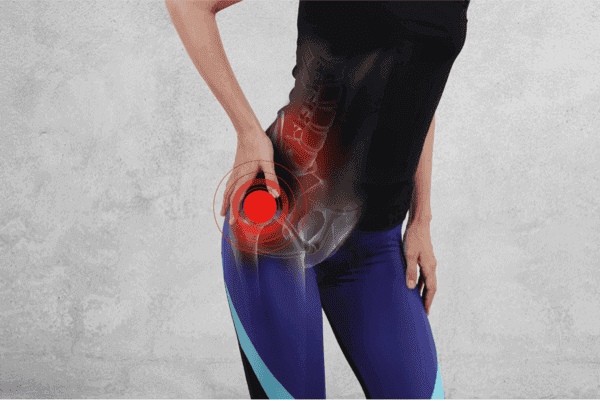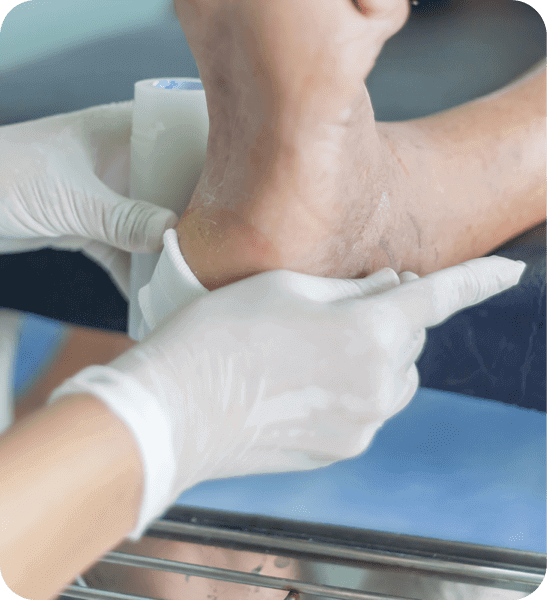HBOT for Depression Treatment

How HBOT for Depression Treatment Helps
Heals Physical Disorders that Cause Depression
Oxygenates Damaged Brain Tissue
Stimulates stem cell reproduction and mobilization
Repairs Damaged Brain Tissue and Idling Neurons
Stimulates Stem Cells to Reproduce
Up-Regulates Growth Hormones that Heal
Reduces Inflammation in the Brain
What the Research Says
At Bay Area Hyperbarics, we have given numerous patients HBOT for depression treatment. It turns out that most of the patients with depression who come to us have a history that includes anoxic brain injuries, including concussions, mild traumatic brain injury (mTBI), post-concussive syndrome radiation damage or other injuries.
Many patients with depression who have been referred to us also present other conditions. They often have a history of head injuries, most often from car accidents, but also sports injuries, falls, and multiple surgeries with anesthesia. Numerous studies show that a whiplash can for example shake the brain in the skull and cause trauma. The anoxic brain injury causing such depression can at times be treated with hyperbaric oxygen therapy.
Other symptoms appear in combination with depression, including anxiety, headaches, cognitive challenges, psychosocial disability, or psychiatric symptoms. When depression occurs with these other symptoms, some physicians consider the depression a result of physical disorders rather than mental disorders. The depression often resolves significantly or completely when treated with a head injury protocol that includes hyperbaric oxygen therapy. Patients who are medicated should also be closely supervised. Medications often need to be reduced or discontinued as patients’ brains heal.
When patients with depression who have experienced anoxic brain injury receive brain scans showing their brains before and after HBOT, the contrast is at times striking. Some patients' brains in the “before” images show dark areas, meaning the neurons are not firing.
After patients receive their hyperbaric treatments (40 to 60 treatments, depending on a physician's recommendation), previously dark areas appear in color. This means that the neurons in these areas are again firing.
While hyperbaric oxygen therapy cannot cure all forms of depression, those that have a physical cause often find significant healing. If you or a loved one experienced brain trauma or anoxic brain injury from sports, an auto accident, or any other cause, please call us. We help many patients feel like their old self again. We know how debilitating such injuries can be, and we want to help you get on the road to recovery.
For patients with severe depression, we require ongoing support from a mental health professional throughout their HBOT sessions, as our experience is that many patients’ depression worsens for a period while they are undergoing hyperbarics.
Research Studies
HBOT improved symptoms, brain microstructure and functionality in veterans with treatment resistant PTSD.
HBOT improved symptoms, brain microstructure and functionality in veterans with treatment resistant PTSD.
Efficacy of hyperbaric oxygen combined with escitalopram in depression and its effect on cognitive function
Efficacy of hyperbaric oxygen combined with escitalopram in depression and its effect on cognitive function
Patient Experiences
-

Shawn Dollar, 34
Fully recovered from concussion symptoms caused after a surfing accident.
Until recently, Shawn held the world record for the largest wave ever ridden. One day while surfing, Shawn had a major accident on the rocks. He broke his neck in four places and experienced significant traumatic brain injury (TBI). As Shawn said “I had suffered major brain damage.” His neurologists had no more answers on how to help him return to normal. As he said “before hyperbaric Oxygen therapy, I was a mess. I wasn’t myself, and was desperate to find a solution to the pain, the headaches, and the brain fatigue.” After only his first treatment, he felt an improvement; the effects were immediate. Shawn said, “I could feel my old self coming back. I was aware that I was going to get better, finally.” In the end, Shawn attributes his full recovery from concussion symptoms to Bay Area Hyperbarics. He is surfing once again and continues to ride the big waves.
-

Kevin, 18
Improved functionality was hampered due to injury caused while playing football.
Kevin had suffered several concussions while playing football. Previously a very good student, he found himself unable to attend High School classes. Instead, he lay most days on his bed in his darkened room depressed, unable to read, talk, or hang out with his friends. His parents were frantic. Kevin had tried prescription drugs and therapy which helped some with his systems. However, they did not eliminate the headaches, fatigue or improve his mood. They did not get him up and back to school. After HBOT, Kevin could attend school again and interact with his friends. HBOT made a major impact on on bringing back Kevin’s cognitive and emotional health and well-being.
-

Mara, 3 months old
Gained the ability to sit up, which she was unable to do because of severe brain trauma at birth.
Mara had severe brain trauma at birth, so at 3 months old, her mom brought her into HBOT. She had a severely misshapen head, a tube in her stomach to feed her, and a tube to help her breath. Tragically, Mara's mother was told her baby would never recover nor respond like a normal child. She had already returned to the hospital twice for complications with her conditions. Mara's mother brought her in 5 days a week for treatment with HBOT. When Mara finished hyperbarics, her tubes had been removed. She could breathe on her own. She was able to eat and swallow food like a normal child. And Mara was strong enough to sit up and wave bye bye when encouraged. The nurse in the Pediatrician's office burst into tears of joy, when she saw the improvements in Mara's conditions.
Physicians: Refer a Patient
You Submit Your Patient’s Information
We Get Authorizations
Patient Starts HBOT

Related Articles
Research on Hyperbaric Oxygen Therapy
-
What is Hyperbaric Oxygen Therapy?
Hyperbaric oxygen therapy treats medical conditions with 100% oxygen in a pressurized hyperbaric chamber. The patient lies or sits in the chamber. The oxygen then saturates the plasma in the blood, allowing oxygen to easily flow throughout the body and reach even areas that are injured or diseased, which typically receive less oxygen. The mechanisms of hyperbaric oxygen therapy include stimulating and mobilizing stem cells, down-regulating inflammatory genes, up-regulating reproductive cells and stimulating DNA. HBOT also regrows tiny blood vessels, and stimulates the growth of new healthy cells in the brain, bones, skin, organs, and tissues. People seek hyperbaric oxygen therapy to heal physical damage in their bodies and to promoting health and anti-aging.
-
Does HBOT kill cancer cells?
Current research indicates that hyperbaric oxygen does not kill cancer cells. However, there has been a small amount of research indicating that hyperbaric oxygen might reduce the size of certain tumors. Also, there has been a study on mice using hyperbaric oxygen, along with a ketogenic diet, to reduce tumors. Hyperbaric oxygen causes many different healing modalities to kick into gear. Could its effect on strengthening the immune system inhibit the growth of cancer cells? Nobody knows. There are numerous studies conclusively showing that hyperbaric oxygen does not encourage cancer cells or tumors to grow. Some patients claim the hyperbaric oxygen makes them feel a lot more comfortable and functional after chemotherapy and also during healing. Note that some chemotherapy drugs are not to be used with hyperbaric oxygen, as the chemotherapy drugs can be enhanced and thus become toxic. A good hyperbaric oxygen facility (such as Bay Area Hyperbarics) will always call the chemotherapy manufacturer to ensure that hyperbaric oxygen therapy will be helpful and not damaging to the patient.
-
IWhat is the CPT code for HBOT?
The CPT code for HBOT is G0277.
-
Does Medicare cover HBOT?
Medicare covers Hyperbaric Oxygen Therapy for approved conditions, and many insurance companies also cover approved conditions. If your condition is not approved by your insurance, we can discuss our special rates. Give us a call at (408) 356–7438. We are happy to discuss your options with you.
-
Can HBOT help Neuropathy?
Hyperbaric treatments help heal neuropathy by regrowing small blood vessels and nerves that have died from disease, injuries from radiation and aging. Patients often experience numbness and or pain when they start treatment. Hyperbaric treatments most often bring back sensation and make, for example, walking easier and more enjoyable.
-
Why would a physician consider HBOT?
A physician would consider using hyperbaric chamber therapy under a variety of situations. Physicians most typically refer patients to hyperbarics when the patient is not healing with traditional medical interventions and hyperbaric chamber therapy is approved by Medicare for this condition. Some patients experience significant unresolved pain and unremitting disease states that the mechanisms of hyperbaric oxygen therapy in a hyperbaric chamber are known to affect, such as the down regulation of inflamatory genes. For an example, some patients have experienced severe, unremitting hives with itching, which did not improve with any specialists interventions. Some physicians will consider hyperbaric chamber therapy if the patient has no other good avenues for improving their failing health, and they know the hyperbaric chamber therapy is safe and will not harm the patient.
-
What is Hypebaric Oxygen Therapy?
Hyperbaric Oxygen Therapy (HBOT) Hyperbaric Oxygen Therapy (HB0T) is a medical treatment where you inhale 100% oxygen in a chamber with increased atmospheric pressure. HBOT injects 400x the oxygen into your tissues and bones and mobilizes stem cells. It regrows healthy tissues in the brain, blood vessels, skin and bones. It also reduces pain and swelling, and speeds recovery. It is simple, effective and painless.
Have more Questions?




